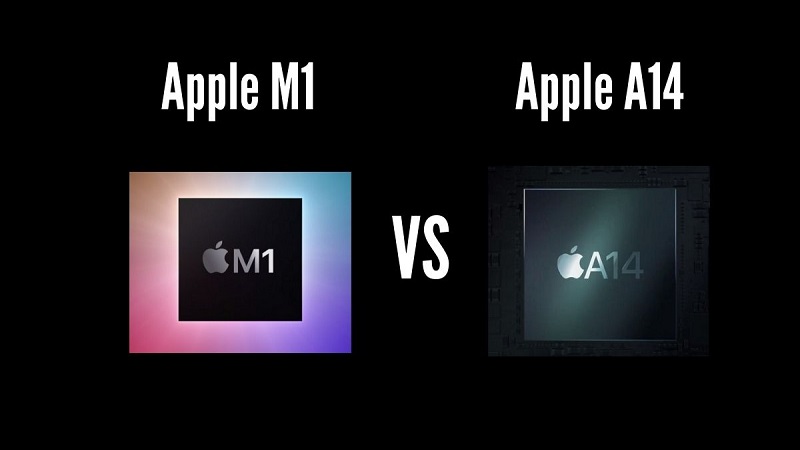In the space of three months (September, October & November), Apple announced a host of products and services, including improved Macs with Apple M1 chip and four new iPhone 12 models with Apple A14 Bionic chip. The M1 has kicked off the era of Apple Silicon-based Macs and the company’s transition away from Intel for its Mac-branded products. While the A14 Bionic is not just a step up over the A12 and A13 Bionic, it also offers up to 40% boost in CPU speed and 30% improvement in graphics. See the table below for how they both compare.
Thank you for reading this post, don't forget to subscribe!Apple M1 vs A14 Bionic: Comparison
| Apple M1 | Apple A14 Bionic | |
| Release Date | November 2020 | September 2020 |
| Technology | 5nm FinFET | 5nm FinFET |
| Transistors | 16 billion | 11.8 billion |
| CPU ISA | ARMv8 | ARMv8 |
| CPU | 3.2GHz 8-Core CPU (ARM big.LITTLE: 4 “big” Firestorm + 4 “little” Icestorm) | 2.99GHz 6-core CPU (ARM big.LITTLE: 2 “big” Firestorm + 4 “little” Icestorm) |
| GPU | 7- or 8-Core GPU (Apple in-house designed) | 4-Core GPU (Apple in-house designed) |
| ISP | Advanced Image Signal Processor | Advanced Image Signal Processor |
| AI/DSP | 16-core Neural Engine (11 TOPS) | 16-core Neural Engine (11 TOPS) |
| Memory | 2133 MHz LPDDR4X | 2133 MHz LPDDR4X |
| Security | Secure Enclave | Secure Enclave |
| Others | Thunderbolt controller, Apple T2 chip | – |
The Apple M1 and A14 Bionic are designed in-house by Apple and manufactured by Taiwan’s TSMC using the 5nm fabrication process. Both ARM based (64-bit) SoCs feature most of the same technologies as well as real time machine learning capabilities, however, the M1 is simply a variation of the A14 Bionic for Macs, albeit more powerful.
By comparison, the M1 has 8 CPU cores, 7/8 GPU cores and 16 billion transistors compared to just 6 CPU cores, 4 GPU cores and 11.6 billion transistors on the A14. In addition, the M1 now allows Macs to run apps originally written for iPads and iPhones. The compatibility with x86 applications is attributed to the presence of the Rosetta 2 layer in the macOS Big Sur. It should be mentioned that these comparisons are rather based on the specs, not their benchmark performance.



Comments are closed.